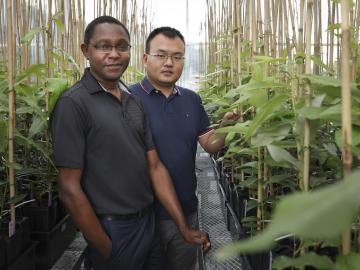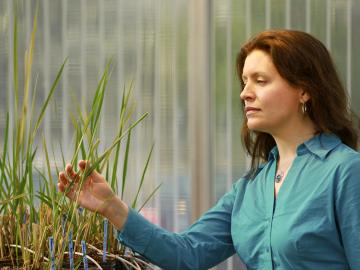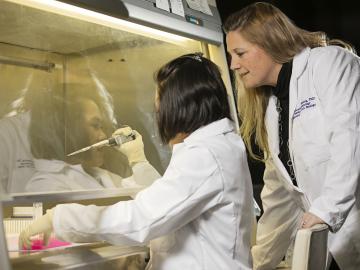Filter News
Area of Research
- (-) Biological Systems (2)
- (-) Biology and Environment (4)
- Advanced Manufacturing (2)
- Building Technologies (2)
- Clean Energy (48)
- Climate and Environmental Systems (2)
- Computational Biology (1)
- Energy Frontier Research Centers (1)
- Fossil Energy (1)
- Fuel Cycle Science and Technology (1)
- Fusion Energy (1)
- Materials (52)
- National Security (2)
- Neutron Science (26)
- Nuclear Science and Technology (14)
- Nuclear Systems Modeling, Simulation and Validation (1)
- Sensors and Controls (2)
- Supercomputing (23)
Media Contacts

Scientists at the Department of Energy’s Oak Ridge National Laboratory have created a recipe for a renewable 3D printing feedstock that could spur a profitable new use for an intractable biorefinery byproduct: lignin.

Attracted to biology, math, and physics as a young student, Omar Demerdash decided that when the time came to narrow his academic interests he wouldn’t pick and choose: he’d pursue them all. Today he’s using his expertise in computational biophysics to model and analyze how molecules interact with p...

For decades, biologists have believed a key enzyme in plants had one function—produce amino acids, which are vital to plant survival and also essential to human diets. But for Wellington Muchero, Meng Xie and their colleagues, this enzyme does more than advertised. They had run a series of experiments on poplar plants that consistently revealed mutations in a structure of the life-sustaining enzyme that was not previously known to exist.

Esther Parish’s holistic approach to life is apparent not only in her environmental research at Oak Ridge National Laboratory, but in her careful cultivation of a future crop of young scientists. Her expertise as a geographer coupled with a keen interest in the natural world drives Parish’s resea...

Dan Jacobson is illuminating the workings of biological systems from the molecular scale up by leveraging Oak Ridge National Laboratory’s supercomputing resources to create machine- and deep-learning techniques more easily understood by humans





